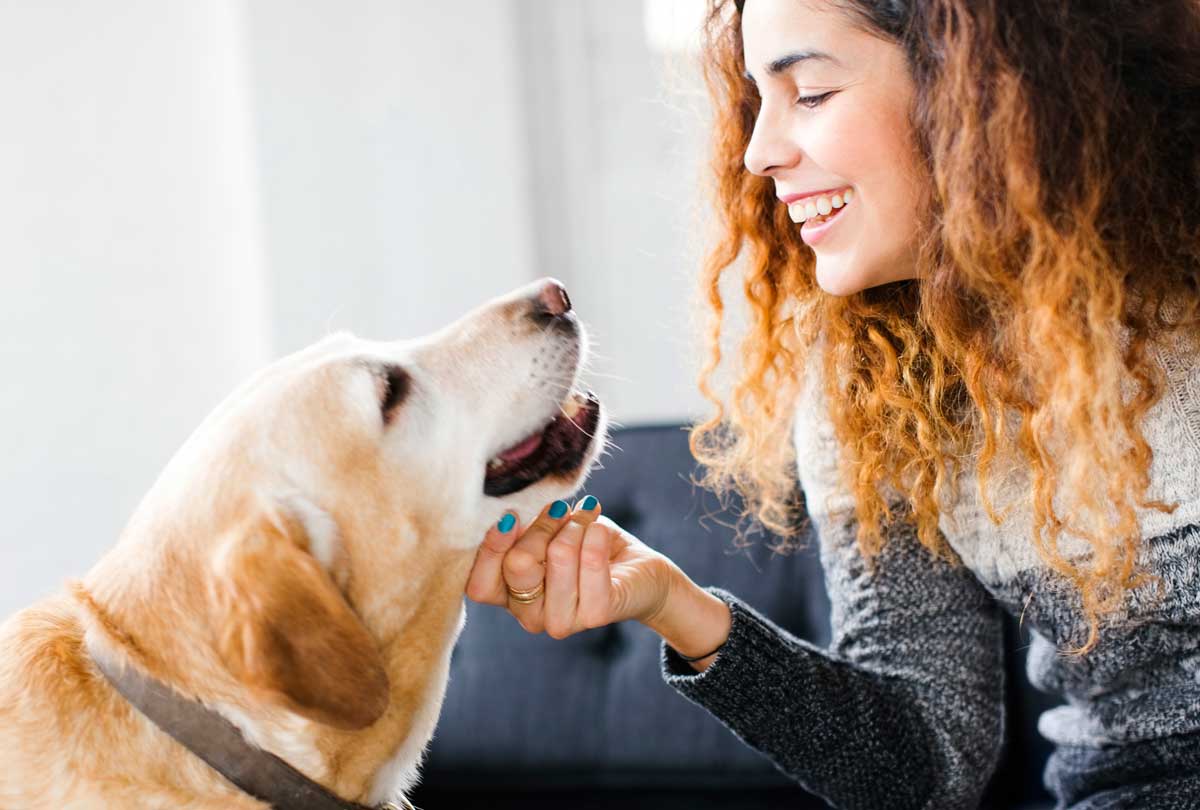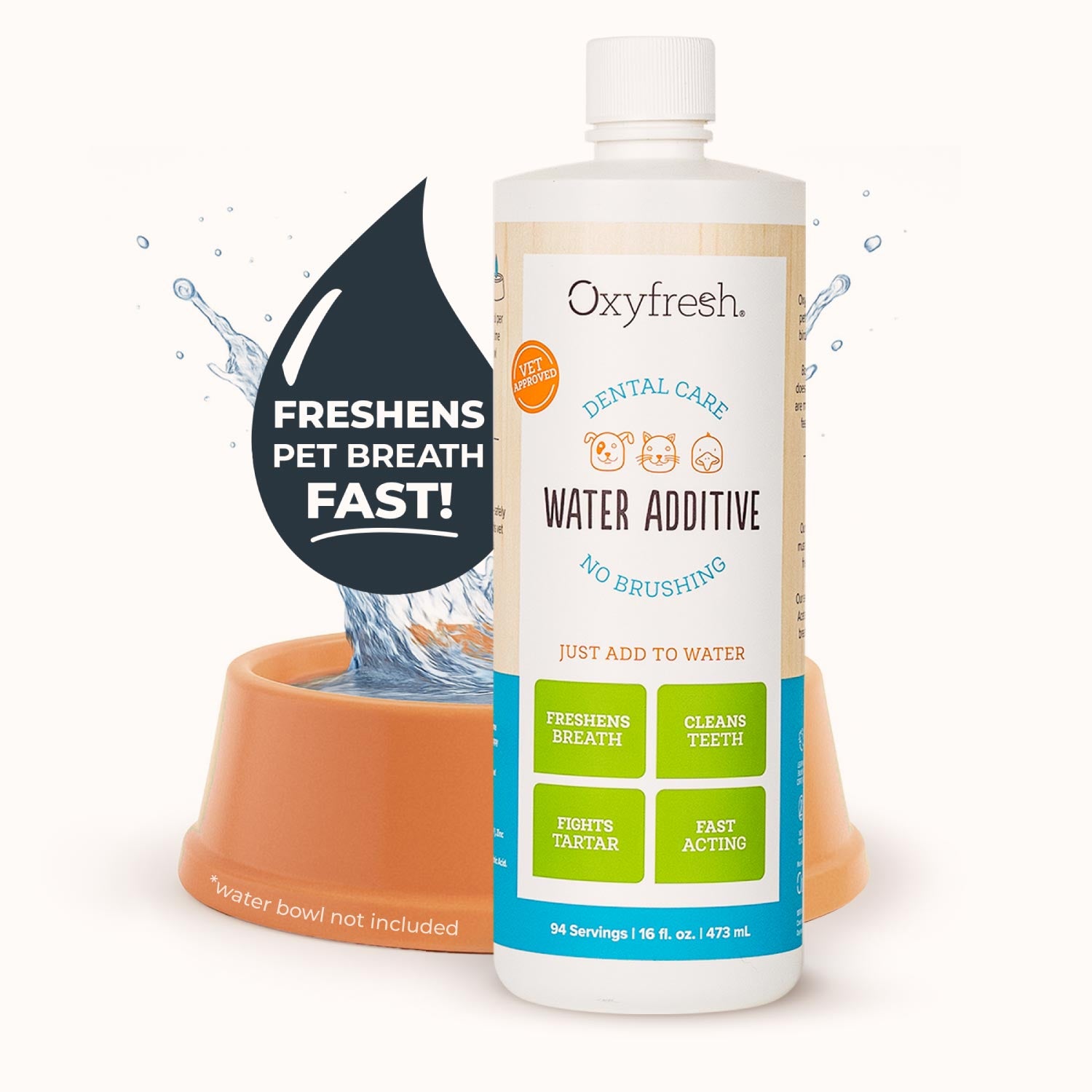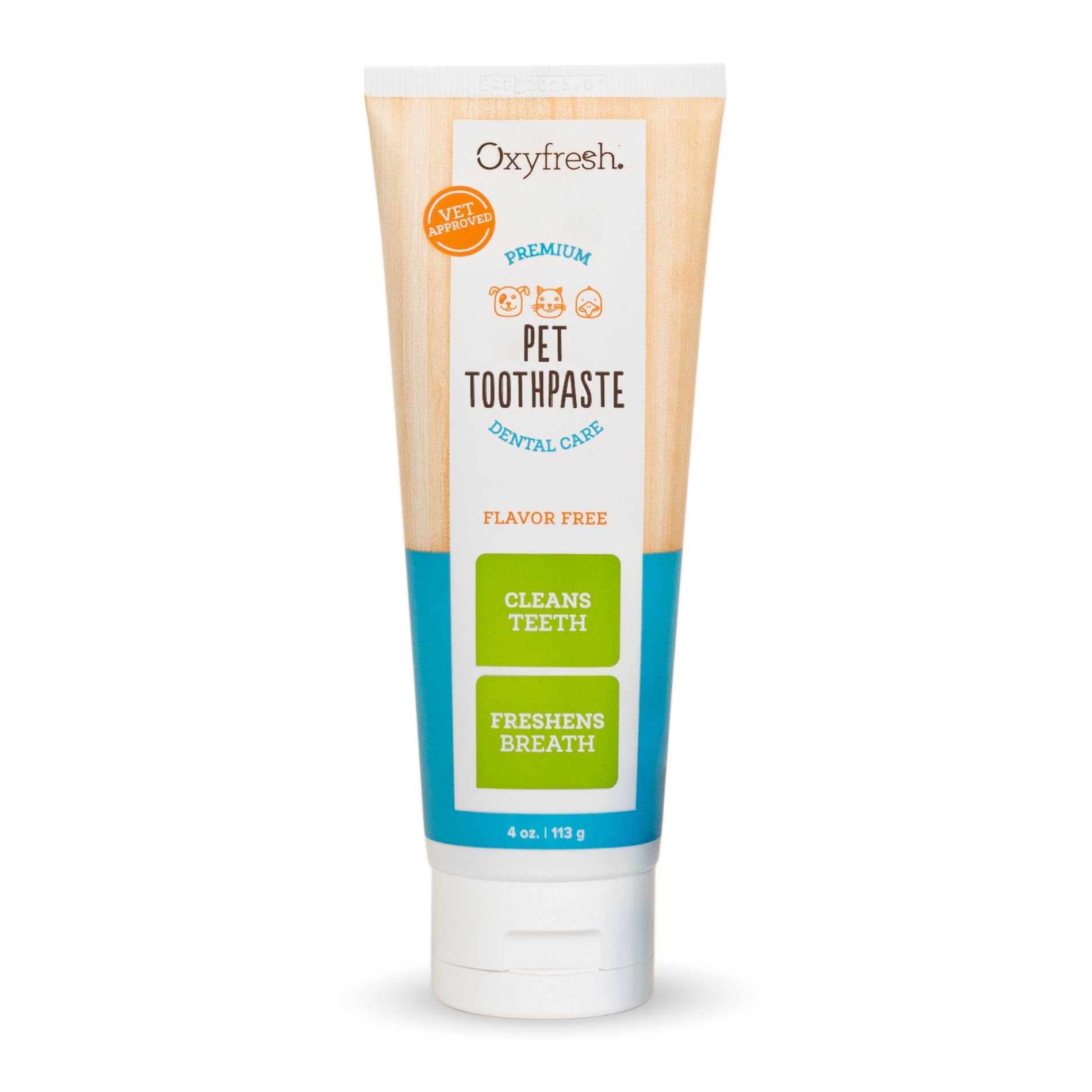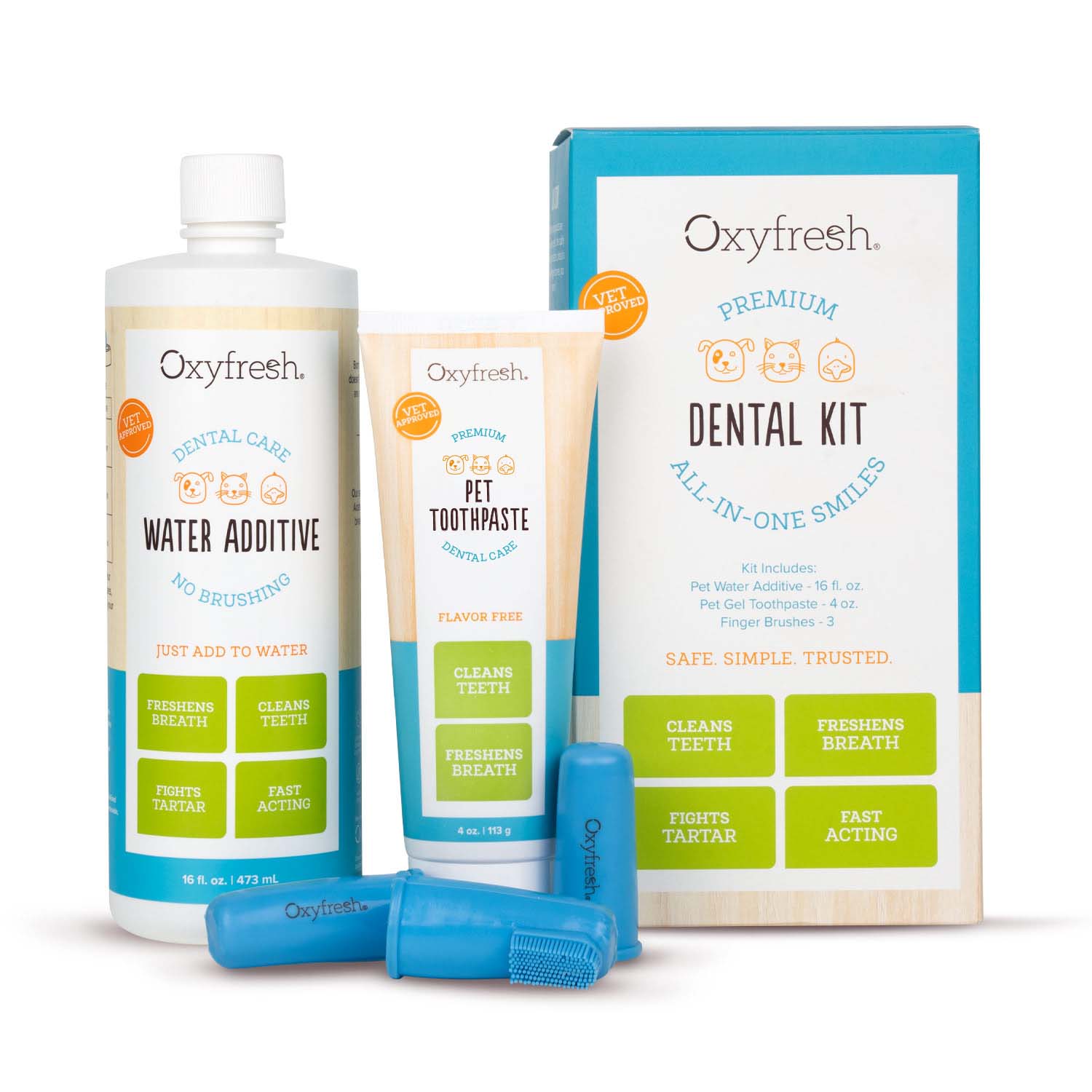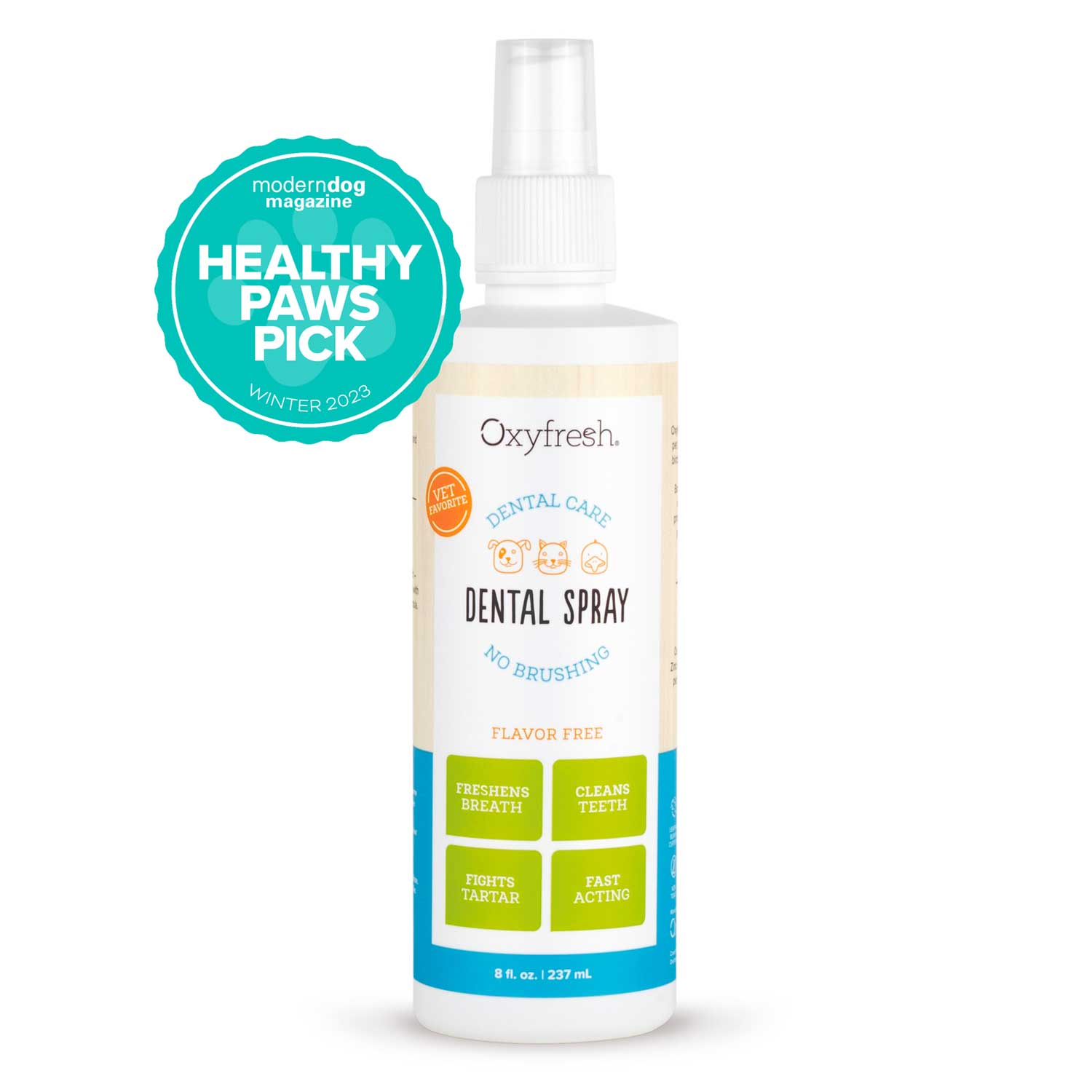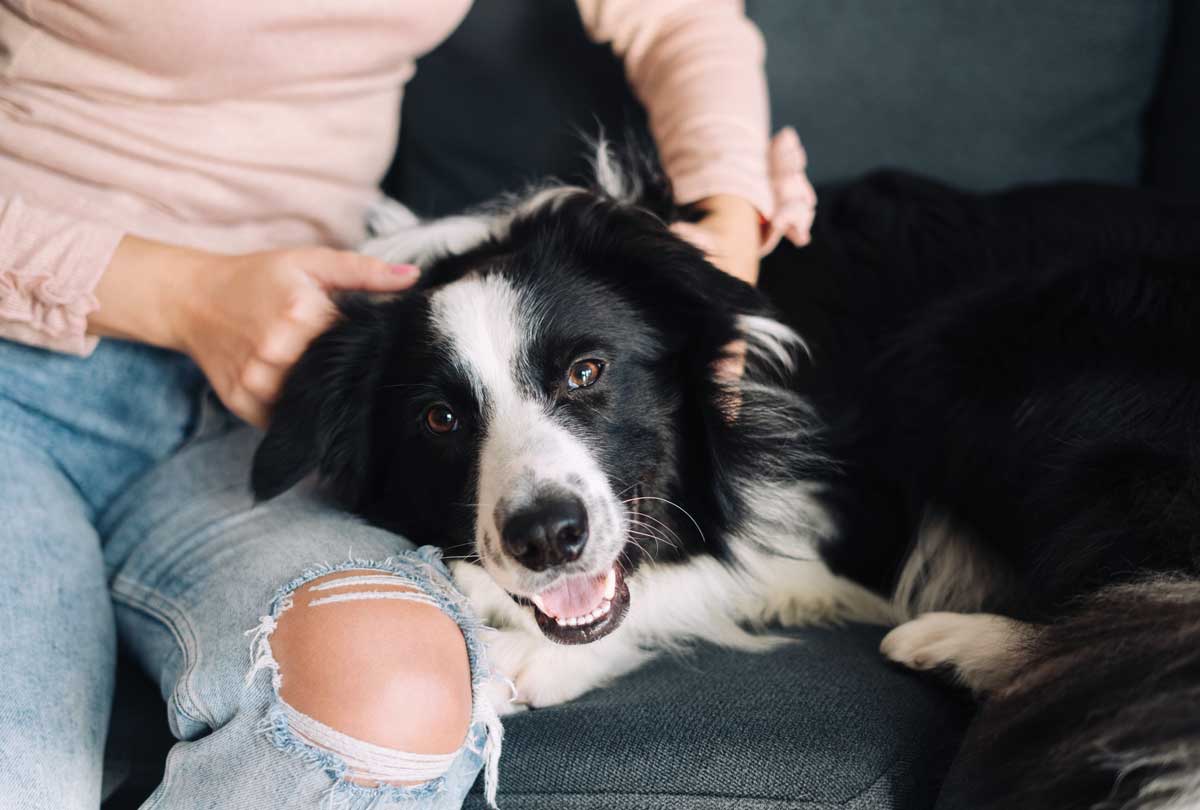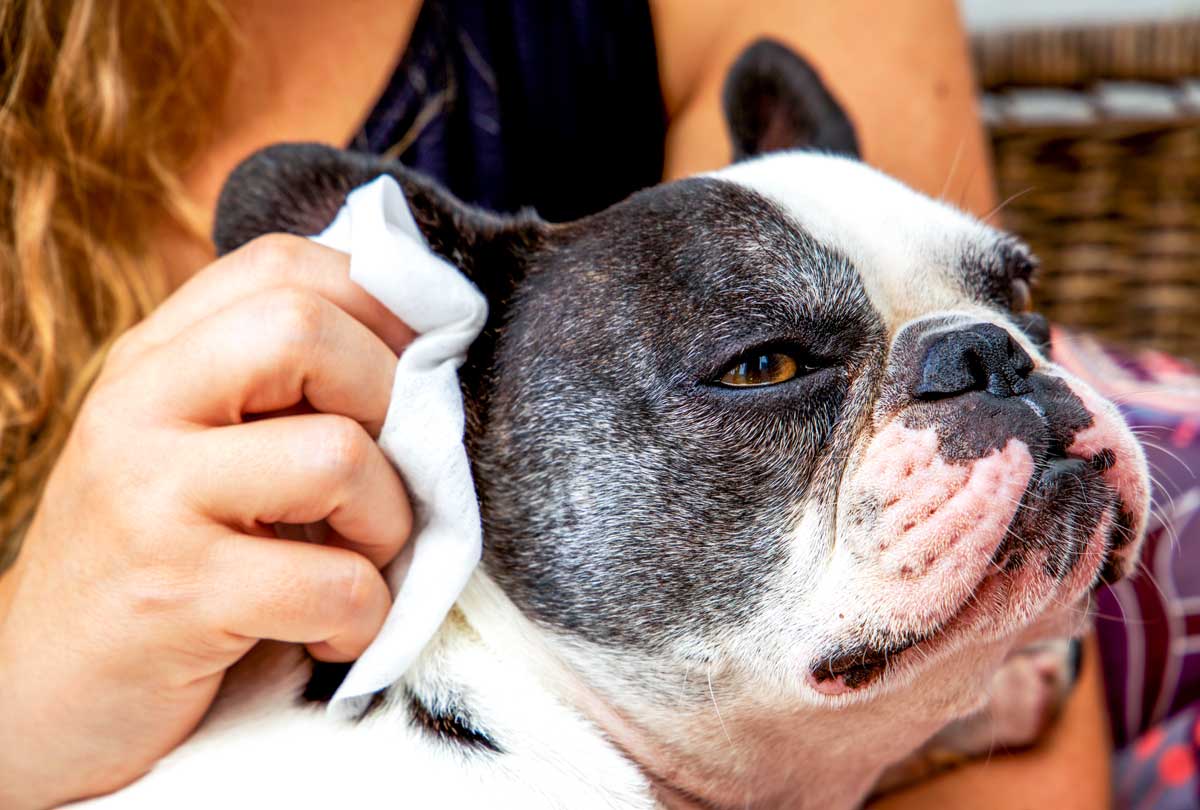The Answer May Surprise You ...
When it comes to how often to brush cat teeth or dog teeth, all the overachievers in the house (they know who they are) may say, "As often as you brush your own!"
But is it really realistic to brush pet teeth 2x daily for two full minutes? (Let’s be honest – this is hard to do for ourselves sometimes!) So for the average pet parent, what should we aim for with pet toothbrushing?
Why Brush Your Cat’s Teeth? (Woof! The Dog’s Too!)
Before we give you the scoop on how often to brush your cat’s teeth or your dog’s teeth, it’s important to know why this matters.
The obvious benefit is fresh breath. Bad pet breath can keep us from being close to them, avoiding kisses and cuddles – you know, the things dogs absolutely love and cats, well, tolerate!
Bad breath is often the first sign of an unhealthy pet smile. It indicates that harmful bacteria is taking up camp in the pet’s mouth.
The secret to a healthy dog and cat smile is to remove plaque from pet’s teeth each day. Within 48 hours, plaque (which forms on teeth after meals) will start to harden into bacteria-filled, yellow-brown tartar, also known as calculus. Tartar causes gum inflammation (gingivitis) and periodontal disease if it’s not addressed.
Healthier Pet Teeth, Longer Life?
With periodontal disease, the gums begin to separate from the roots of the teeth, causing tooth loss, pain, and even harm to pets’ organs like the kidneys and heart because of how bacteria can spread through the whole body via the mouth. That’s why brushing your cat’s teeth or dog’s teeth can literally give them a new "leash" on life!
Have You Dropped the Ball – ‘Er, Toothbrush – With Your Pet’s Oral Care?
You’re not alone. In a survey of 1,000 dog parents, 31% said they NEVER brush their dog’s teeth. Of those who do brush their dog’s teeth (a respectable 46%), they only do so once or twice a week, which, tooth be told (sorry for the "pun"-ishment) is simply not enough to make much of a difference.
The numbers are even more dire for cats ... 73% of cat parents never brush their cat’s teeth and only 3% do it a few times a week. Eek!
Top reasons pet parents don’t brush cat or dog teeth
- They're unaware of the importance of good oral care
- They believe that dental treats alone will do the job (they won’t)
- Pet won’t sit still
How Often Should I Brush My Dog’s Teeth?
To reap the benefits of brushing (healthy teeth and gums and fresh breath), brushing pet’s teeth should be done at least three times a week. If you have the time, teeth brushing daily is even better. And, despite the betrayed, what-is-happening-right-now look they may give you initially, many dogs and cats grow to love having their teeth brushed. Yay for more bonding time!
Because 80% of dogs and 70% of cats have gum disease by age three, it’s important to start a tooth brushing routine when pets are young. But don’t worry if your pet is getting up there in years. It’s never too late to start focusing on their oral care.
How to Brush Your Pet’s Teeth
The best piece of advice for brushing cat teeth and dog teeth? Look before you leap. This is not the time to wing it ... unless, of course, frustration lands on your list of favorite emotions.
What to use to brush cat & dog teeth
First things first. You need the right supplies. No shortcuts here! Human toothpaste can be highly irritating to pets and even extremely toxic if it contains xylitol.
- Pet Toothpaste: To make it easier on you and your pet, we recommend Oxyfresh Pet Toothpaste. What makes it unique is it’s completely free of flavors. The benefit of this is two-fold: One, your pet will actually sit still for brushing and not try to bite or chew the brush. Two, some flavors dogs and cats just don’t like. If your pet hates the taste of the toothpaste, it can make brushing all the more dramatic, and not in a good way. Plus, only Oxyfresh vet-recommended Pet Toothpaste has the power of non-toxic Oxygene® to neutralize plaque and bad breath right at the source, leaving pets with truly fresh, clean smiles. No masking agents, ever!
- Pet Toothbrush: Again, you’ll want your pet to have their own toothbrush. While there are specially designed toothbrushes for pets, most pet parents find finger brushes to be the easiest option. They just slip on right over your finger and let you maneuver it around their mouths with ease.
Familiarize your dog or cat with the teeth brushing process
Remember – slow and steady wins the (toothbrushing) race. Half the battle is going to be the initial prep work. Putting in the work upfront will pay off with a more cooperative pet when it’s actually time to tooth brush, so they’re not like, "What on earth are you doing to me?!!"
- Go slow. A week or two before you actually brush, get your dog or cat used to you touching their mouths. Lift their lips, touch their teeth and gums, and let them sniff your tooth brushing supplies each day. If your pet is NOT wild about this, put some tuna or salmon juice on your finger and then rub their gums. (Or use a Q-tip or washcloth if that grosses you out.) Praise them as you go and talk calmly throughout the process.
- Embrace the Zen. Make sure you choose a time for brushing when your dog or cat is calm and relaxed, like after a walk or when it’s time for some shut-eye.
- T-R-E-A-T. Got some irresistible, high-value treats stashed in the cupboard? Give one to your pet immediately following every mouth-handling session. Treating will build a positive association in your pet’s mind.
Let’s brush
Once your sweet dog or cat is used to you touching their mouths, it’s time to brush! Don’t take on the world here. You CAN brush your pet’s teeth without losing your sanity. Just focus on the outer teeth where plaque and tartar accumulate. And, just do it for a few seconds initially. As your pet adjusts, you’ll be able to increase your brushing time to 30 seconds per side.
5 Steps to Pet Toothbrushing
What to Do If Your Cat or Dog Hates Having Teeth Brushed
The reality is that some pets just don’t take to toothbrushing. This is often the case with older pets who are more set in their ways. But don’t worry – that doesn’t mean you’re destined for expensive pet dental cleanings. It just means you have to get a little more creative with how you care for your pet’s teeth.
For an easy no-brush routine, try Oxyfresh Pet Dental Water Additive. Just like Oxyfresh’s Pet Toothpaste, it has the active, proprietary ingredient Oxygene® to stop the bacteria that cause plaque and stinky pet breath ... only instead of applying it to their teeth, it goes straight into their water bowl. Got a picky kitty or pup? Fear not – it’s tasteless and odorless so you can outsmart them every time.
The Takeaway: Whether you go the route of toothbrushing or water additive, the important thing is just to do it! Your pet will thank you with those fresh-breath kisses, cuddles and sparkly clean teeth.

